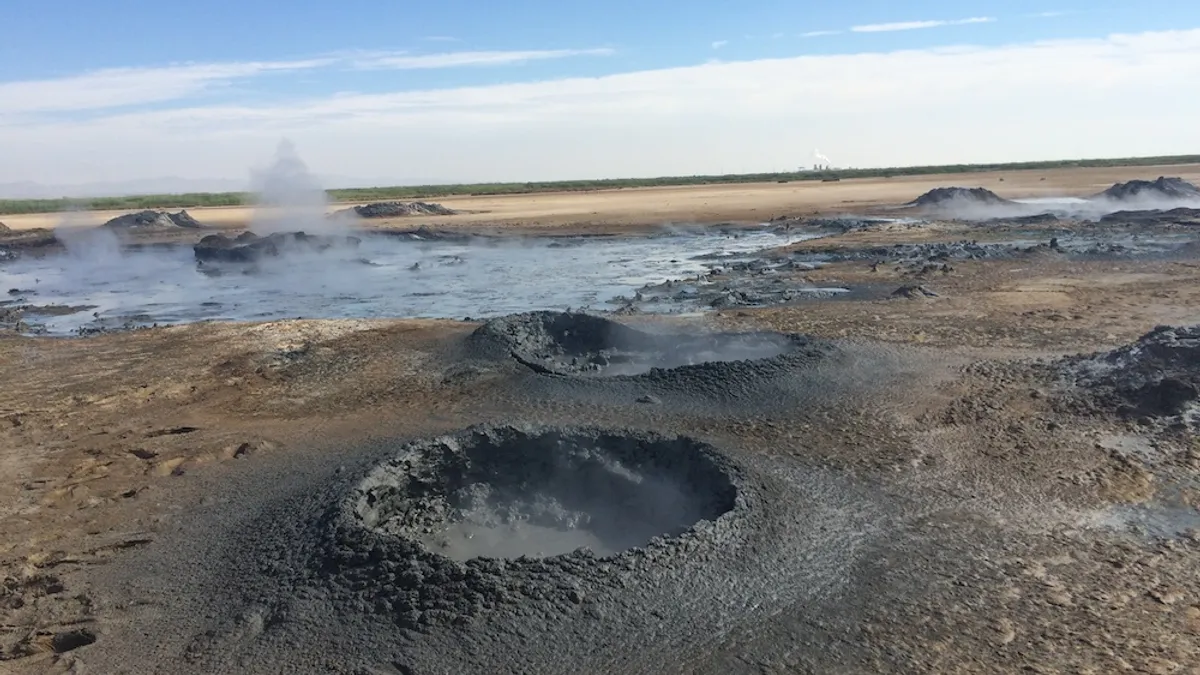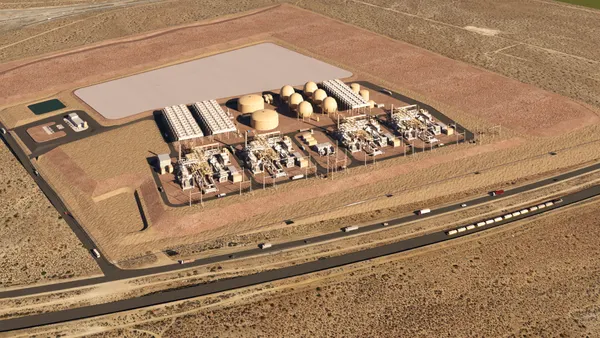Dive Brief:
- Geothermal company Sage Geosystems has closed a $17 million Series A funding, which will go towards funding a 3-MW commercial geo-pressured geothermal system in Texas, the company announced Thursday.
- The plant — called EarthStore — will be able to store energy for both short and long durations using pressurized water stored underground, complementing solar, wind and other renewable sources of generation to help provide dispatchable energy to the grid, according to the company.
- A recent study from Princeton University and geothermal start-up Fervo Energy found that tapping into the energy storage capabilities of enhanced geothermal reservoirs could help increase the value of the energy source dramatically.
Dive Insight:
Last September, Sage Geosystems conducted a pilot to test its technology and concluded that it could provide 18 hours or more of storage capacity at a cost that can compete with both shorter-duration lithium-ion batteries, as well as longer-duration pumped storage hydropower. The levelized cost of storage for its technology depends on duration and is between 2 cents/kWh and 4 cents/kWh, according to the company.
Sage’s technology involves drilling a well to form a fracture in a certain kind of rock formation, which is then used as a makeshift reservoir. Excess solar, wind or other renewable energy can be used to pump water into that reservoir, causing it to expand and store the water under pressure. When electricity is needed back on the grid, opening the facility’s valves will send water back to the surface, where it will turn a turbine to generate power. The company expects the technology can complement renewable energy, as well as replace gas peaker plants during periods when the grid is especially stressed.
Now, the company is preparing a first-of-its-kind commercial geothermal system in Texas. Sage is manufacturing equipment for the 3-MW facility and plans to begin constructing it in the second quarter of 2024, aiming for a commission date in the fourth quarter of the year. The exact location of the plant has not yet been announced.
Sage Geosystems chose Texas for its first commercial energy storage facility for two reasons: the ability to move rapidly, and the fact that the Texas market has rapidly growing installations of wind and solar, making it a good fit for energy storage, CEO Cindy Taff said in an email. The company is also looking at energy storage and geothermal projects in California, Arizona, and locations outside the U.S., and is eyeing a potential energy storage test in Arizona this year, she added.
Meanwhile, a study from Princeton University and Fervo Energy released in January found that tapping into the energy storage potential of enhanced geothermal — essentially, a form of geothermal energy that is less dependent on specific geographies — along with declines in the cost of drilling technologies could result in over 100 GWs worth of geothermal capacity in the Western U.S.
Traditional geothermal energy requires specific geographic conditions, including kinds of rock, and in 2022 produced only 0.4% of the total electricity in the U.S.
But newer approaches to drilling and hydraulic fracturing could change that. In fact, by using geothermal power plants in a flexible manner and leveraging their energy storage abilities, the value of the resource could be dramatically increased and used to smooth out intermittent renewable energy, the study found.
“Wind and solar are now the cheapest sources of clean energy, but their downfall is their variability and weather dependency. You can earn a lot of additional revenue if you can find a way to shift your clean energy generation to times without wind and solar,” Jesse Jenkins, assistant professor of mechanical and aerospace engineering and the Andlinger Center for Energy and the Environment at Princeton University, said in a statement.















